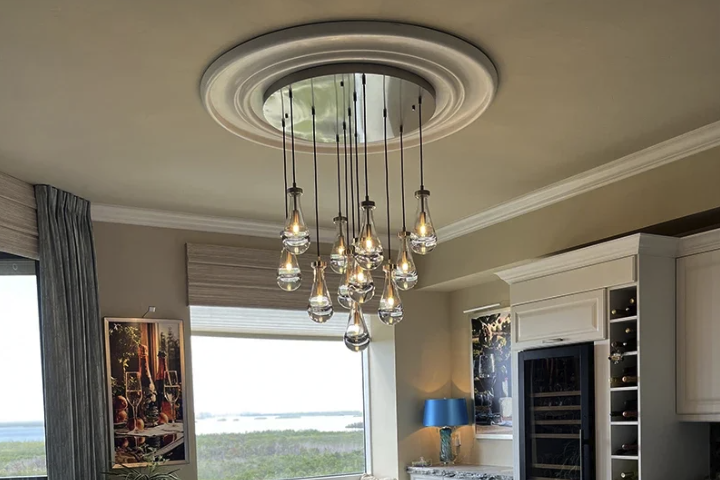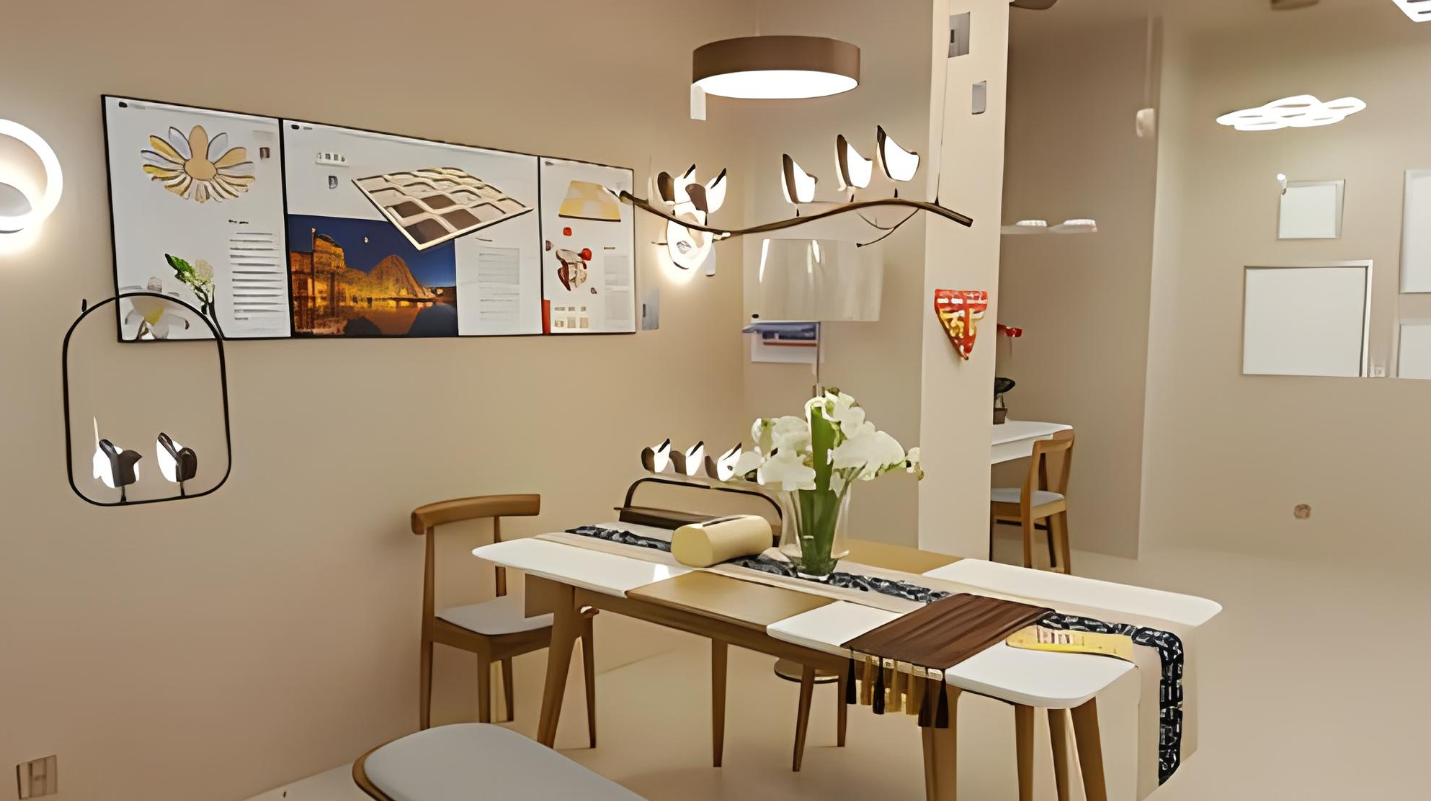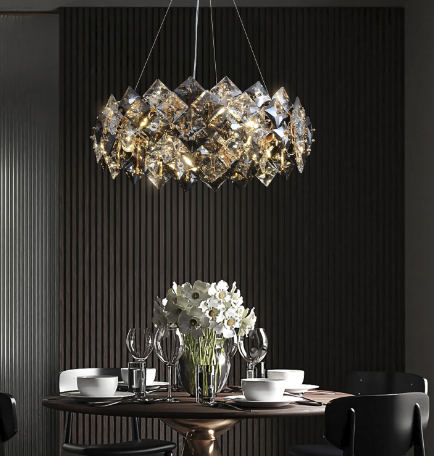The glass painted grape vine chandelier is a stunning piece of art that transcends mere lighting to become a focal point in any room. This exquisite fixture combines the beauty of nature with the elegance of glass artistry, creating an ambiance that is both inviting and sophisticated. The intricate designs often feature clusters of grapes, leaves, and vines, all meticulously crafted to evoke the charm of a vineyard.
As light filters through the colored glass, it casts a warm, enchanting glow that enhances the overall aesthetic of the space. These chandeliers are not just functional lighting fixtures; they are also expressions of creativity and craftsmanship. The interplay of light and color in a glass painted grape vine chandelier can transform a mundane room into a captivating environment.
Whether hung in a dining room, foyer, or living area, these chandeliers serve as conversation starters, drawing attention and admiration from guests. Their unique designs and vibrant hues make them suitable for various decor styles, from rustic to contemporary.
History and Origins of Glass Painted Chandeliers
The history of glass painted chandeliers Martliving can be traced back to the early days of glassmaking, which began in ancient civilizations such as Egypt and Mesopotamia. However, it was during the Renaissance period in Europe that glass chandeliers began to gain prominence. Artisans in Venice became renowned for their skill in creating elaborate glass pieces, including chandeliers that featured intricate designs and vibrant colors.
The use of painted glass added another layer of artistry, allowing for more personalized and decorative elements. As the demand for opulent lighting fixtures grew, so did the techniques used in their creation. By the 18th century, glass painted chandeliers had become a symbol of wealth and sophistication among the European elite.
They adorned grand ballrooms and lavish dining rooms, illuminating spaces with their brilliance. The grape vine motif emerged as a popular design choice, symbolizing abundance and prosperity. This motif not only reflected the agricultural richness of the regions but also resonated with the cultural significance of wine in social gatherings.
Design and Craftsmanship of the Grape Vine Chandelier
The design of a glass painted grape vine chandelier is characterized by its organic forms and intricate detailing. Artisans often draw inspiration from nature, incorporating elements such as twisting vines, clusters of grapes, and delicate leaves into their creations. Each piece is typically handcrafted, ensuring that no two chandeliers are exactly alike.
This level of craftsmanship requires not only artistic vision but also technical skill in glassblowing and painting. The process begins with the selection of high-quality glass, which is then shaped into various components of the chandelier. The grape clusters are often formed by blowing glass into molds or hand-shaping it to achieve a lifelike appearance.
Once the basic structure is complete, artisans apply paint to enhance the visual appeal. This painting process can involve multiple layers to achieve depth and vibrancy, with colors ranging from rich purples and greens to soft ambers and golds. The final assembly brings together these elements into a cohesive design that captures the essence of a vineyard.
Materials and Techniques Used in Creating the Chandelier
Creating a glass painted grape vine chandelier involves a variety of materials and techniques that contribute to its beauty and durability. The primary material is glass, which can be sourced from different regions known for their glassmaking traditions. For instance, Murano glass from Italy is highly sought after for its clarity and brilliance, while other types may offer unique textures or colors.
In addition to glass, metal components are often used to provide structural support and enhance the overall design. Common metals include wrought iron or brass, which can be finished in various ways to complement the glass elements. Techniques such as patination or gilding can add an extra layer of elegance to the fixture.
The craftsmanship involved in creating these chandeliers is labor-intensive. Artisans employ techniques such as lampworking, where glass rods are heated and manipulated to form intricate shapes. Painting on glass requires precision; artists often use special paints that can withstand high temperatures during the firing process.
This ensures that the colors remain vibrant and do not fade over time. The combination of these materials and techniques results in a chandelier that is not only visually stunning but also built to last.
The Versatility and Functionality of the Chandelier
One of the most appealing aspects of the glass painted grape vine chandelier is its versatility. While it is often associated with traditional or rustic decor, its unique design allows it to fit seamlessly into various interior styles. In a modern setting, for example, a grape vine chandelier can serve as a striking contrast against minimalist furnishings, adding warmth and character to an otherwise stark environment.
Functionality is another key feature of these chandeliers. They are designed to provide ample illumination while also serving as decorative elements. Depending on their size and placement, they can effectively light up large dining areas or cozy nooks without overwhelming the space.
Many designs incorporate adjustable lighting options, allowing homeowners to customize brightness levels according to their needs or mood. Moreover, these chandeliers can be used in both residential and commercial settings. In restaurants or wine bars, they create an inviting atmosphere that enhances the dining experience.
In homes, they can be focal points in entryways or living rooms, drawing attention while providing essential lighting. Their adaptability makes them a popular choice for those looking to elevate their decor without sacrificing functionality.
Maintenance and Care for Glass Painted Chandeliers
Maintaining a glass painted grape vine chandelier requires attention to detail to preserve its beauty over time. Regular cleaning is essential to prevent dust accumulation on both the glass and metal components. A soft microfiber cloth is ideal for gently wiping down surfaces without scratching the delicate paint or glass.
For more thorough cleaning, especially if there are hard-to-reach areas, using a mixture of mild soap and water can help remove grime without damaging the finish. It is also important to consider the placement of the chandelier when it comes to maintenance. Chandeliers hung in high-traffic areas may require more frequent cleaning due to exposure to smoke or cooking fumes.
Additionally, ensuring that light bulbs are replaced promptly when burnt out will help maintain consistent lighting quality and prevent any strain on the electrical components. For those who live in areas with high humidity or temperature fluctuations, extra care may be needed to protect the chandelier from potential damage. Using dehumidifiers or ensuring proper ventilation can help mitigate these risks.
Periodic inspections for loose fittings or signs of wear will also contribute to the longevity of this exquisite lighting fixture.
How to Incorporate the Chandelier into Different Decor Styles
Incorporating a glass painted grape vine chandelier into various decor styles can be an exciting endeavor for homeowners looking to enhance their spaces. In traditional settings, these chandeliers can complement ornate furnishings and rich fabrics beautifully. Pairing them with wooden dining tables or antique sideboards creates a cohesive look that celebrates classic elegance.
For those leaning towards a more contemporary aesthetic, a grape vine chandelier can serve as an unexpected focal point amidst sleek lines and modern materials. Choosing a design with bold colors or unique shapes can create a striking contrast against minimalist decor. Additionally, placing it in an open-concept space allows it to act as a bridge between different areas while maintaining visual interest.
In rustic or farmhouse-style interiors, these chandeliers resonate well with natural elements such as exposed beams or stone walls. Opting for designs that feature earthy tones or distressed finishes can enhance this aesthetic further. Conversely, in eclectic spaces where various styles converge, a grape vine chandelier can add an artistic flair that ties together disparate elements through its organic forms and vibrant colors.
The Timeless Elegance of Glass Painted Grape Vine Chandeliers
The allure of glass painted grape vine chandeliers lies not only in their aesthetic appeal but also in their rich history and craftsmanship. These fixtures embody a timeless elegance that transcends trends, making them cherished additions to any home or establishment. Their ability to blend seamlessly into various decor styles while providing functional lighting ensures their continued popularity among discerning homeowners and designers alike.
As we appreciate these exquisite pieces of art, it becomes clear that they are more than just sources of illumination; they are reflections of culture, artistry, and nature’s beauty captured in glass. Whether illuminating a grand dining room or adding charm to a cozy nook, glass painted grape vine chandeliers remain enduring symbols of sophistication and grace in interior design.




